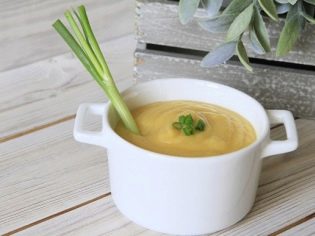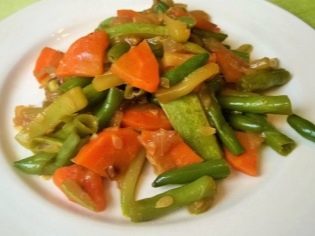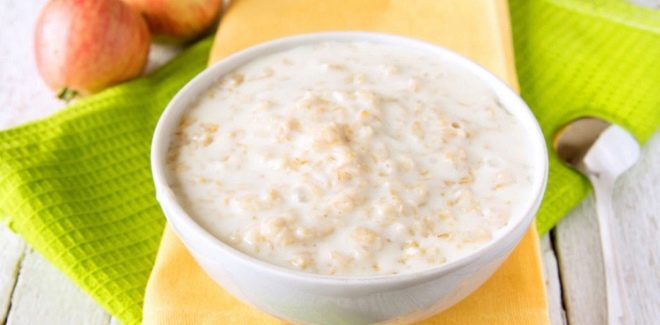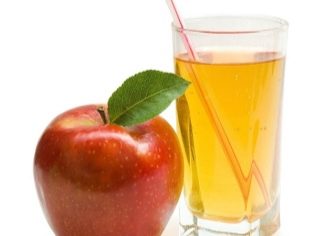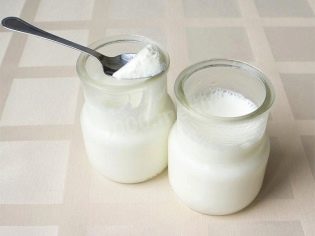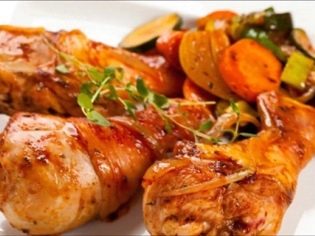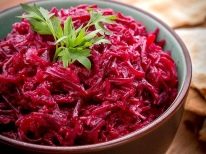Food after cesarean section
A caesarean section is a serious surgical operation, therefore there are certain limitations in matters of catering, both before and after the surgical delivery. In this article, we will talk about what a woman can and cannot eat in the first days after operative labor, as well as how to plan meals in the first six months after the operation.
Why is a diet needed before and after surgery?
The correct approach to catering is important primarily for the proper course of the operative period and easier rehabilitation of the female body after the operation. During the delivery operation, the woman is given anesthesia. Food in the stomach, which the woman took before the operation, or heavy foods that are not digested in a few hours, can cause a severe attack of vomiting right during the operation.
For this reason, the woman the day before surgery It is recommended to avoid fatty and heavy foods. For lunch, the day before the planned operation, doctors advise to eat only light vegetable soups, and for afternoon tea - fruit, such as an apple. Dinner is no longer recommended - the body must be given time to digest all that already exists in the digestive tract. On the morning of the operation, the woman is given an enema and the intestines are cleaned. Neither drinking nor eating this morning is recommended.
A strict diet is necessary for the first 1-2 days after surgery, so that the intestine as long as possible remains empty of the stool. Overflowing intestinal loops will put pressure on the uterus, which has been dissected and sutured. Due to this, its contractility will decrease. And constipation in the early postoperative period is generally a big problem, since it is painful and scary for the woman to push.
Before the happy mother of the newborn starts eating from the common table, she must restore the normal functioning of the intestines after the operation. For this, we recommend a special motor mode - after 5 hours after the operation, you can turn on your side, and after 8-10 hours a woman should stand up and walk. Long lying in bed will be not only a prerequisite for complications from the involution of the uterus, but may also result in problems with digestion.
When a woman goes on a general diet, after surgery it is especially important that it is high-calorie. The presence of a sufficient amount of protein in the diet will allow for faster recovery, as well as a positive effect on the process of production of breast milk.
First days
Early postoperative period is very important for the puerperal. On how it will pass, depends on the entire rehabilitation period. And to significant nutritional restrictions must be treated with understanding and patience.
The first day after cesarean section can not be. You can only drink, and even a limited amount of fluid - no more than one and a half liters per day. It is better to drink pure water without gas with the addition of a small amount of lemon juice. You can prepare such water in advance, on the eve, and leave it in a plastic bottle, not forgetting to ask the medical staff to bring you this drink to the ward. In the evening, after a morning operation, a small amount of green apple juice is allowed.It is not necessary to sort out with water, as after surgical labor, edema of the lower extremities, internal edema can develop.
2 day after surgery extends the diet of the puerperal. Usually, by this time, women are already quite noticeably suffering from hunger. But there is everything in any case impossible. You can drink lean beef or chicken broth. It is important that it is not concentrated. Best of all for the puerperal suitable so-called secondary broth, which is obtained by changing the water in the pan after receiving the first, more fatty broth. It should not be spices, a large amount of salt, pepper.
To the broth, you can add a small amount of white crackers, which are cooked at home and do not contain preservatives, salt, food additives and flavors.
On the second day, the woman can also start eating mashed potatoes, in the preparation of which no butter was used. You can drink not too sweet tea, as well as diluted juice. Towards evening, a woman can afford a small jar of meat baby food - mashed potatoes.
On the 3rd day, you can add water-based porridge to your diet. The exception is rice and semolina, which can cause constipation and fermentation in the intestines. It is not necessary to add butter and sugar to porridge. In the second half of the third day you can eat steamed chicken cutlets, boiled and steamed vegetables, drink kefir, sweet tea.
From 4 days the puerperal is transferred to the common table, she can eat everything that is served to nursing mothers in the maternity hospital. She can bring any food from home, as long as it is steamed or boiled, all fat and fried, smoked, semi-finished products, confectionery are completely excluded. From the third to the fourth day after cesarean section, women usually for the most part begin the arrival of breast milk. therefore The amount of fluid consumed by the puerperal should be reduced to 800 ml per day so as not to cause excessive engorgement of the mammary glands.
It is the abundance of vegetables and fruits, as well as cereals and mashed potatoes that will help the woman quickly and gently “start” the work of the intestines, to avoid constipation. If, nevertheless, it was not possible to avoid them, then on the 4th day you need to carry out an enema. It will be made in a maternity hospital setting, or it will be prompted how mild laxatives can be used to solve a delicate and unpleasant problem.
General rules for the organization of the diet
Much in matters of nutrition depends on whether the mother will breastfeed the baby or whether only artificial feeding is planned. Circumstances may be different. We will present the general principles to be followed by the puerperal after operative delivery, regardless of whether she is breastfed and has a baby.
- Meals should be five or six times. If a woman is breastfeeding, that is, she should be about half an hour before feeding the baby. If it does not feed, then with an interval of 2.5-3.5 hours in order to quickly get in shape.
- Fat, fried, grilled and other tasty and beautiful can not be. The main methods of cooking - cooking, roasting in the oven, stewing, steaming.
- Canned foods and convenience foods are canceled before the end of breastfeeding and until full weight is returned to the usual weight after the birth. A woman should eat only freshly prepared food.
- Watch carefully for the amount of fluid you drink. After the establishment of lactation (approximately a week after the operation), the amount of fluid after a small reduction to 800 ml per day is forced to begin to increase to one and a half liters per day. Drinking is no longer worth it to avoid lactostasis.
If a woman does not breastfeed, then one and a half liters of fluid a day is not the limit, you can drink two, it will help you lose weight faster.
- All delicacies introduced for the first time, which the newly-made mother will gradually add to her diet, should be introduced only when the baby is four weeks old. In the first month after cesarean, it is better to adhere to more stringent rules, eating vegetables and fruits baked or boiled, meat - boiled, steamed, dairy products - in moderate amounts. From the beginning of the second month, you can add one new product to the menu from the list of allowed ones every 3 days. If an allergic reaction does not appear in a breastfed baby, you can add the following product, but not earlier than in 3-4 days.
- The restrictions stipulated by the list of prohibited products must be valid for at least six months if the woman does not breastfeed, and until the end of breastfeeding, if it takes place. These products include alcohol, chocolate, citrus, mayonnaise, seafood and legumes.
Nursing mother's diet
In breast milk should be everything that is needed for the growth and development of the child. At some period of time, breast milk will be its only product, and its composition must fully meet the needs of a small organism in vitamins and minerals. Therefore, the woman is not shown strict monodiets, implying significant restrictions, starvation.
You need to make your diet out of the products that you can eat, but take into account both their caloric content and your own physical activity, then you can “kill two birds with one stone” - breastfeed the baby and lose those extra pounds gained during the pregnancy. Below are lists of foods that should be the basis of the diet, and foods that breastfeeding should be abandoned.
Allowed
What can there be a woman who underwent a cesarean section after the end of the early postoperative period is usually not told in maternity hospitals. And if they give recommendations, they are very approximate. Therefore, an accurate list of foods and dishes that are allowed for breastfeeding after surgery, will not be superfluous.
- Butter. Butter should be limited to 25 grams per day. Vegetable oil can also be added to food, although avoiding its heating and boiling. The total allowable daily amount of vegetable oil - 10 grams.
- Bread, crackers, cookies. Bread is better to buy wheat is not higher than the second grade, it is permissible to make crackers of gray bread, dry biscuits are allowed.
- Cereals, porridge from them. First, in the water, then it is possible and dairy, the proportion of milk in the preparation of which does not exceed one third of the total liquid. The exception is manna, with caution and in small quantities it is allowed to eat barley, rice porridge, corn grits. You can add a little oil to the porridge.
- Meat, poultry, fish. Meat and fish can be eaten 2-3 times a week. The rest of the time it is better to stop the selection on white chicken meat. In general, only low-fat varieties should be chosen. If fish, then hake, zander, pollock, cod. If meat, then beef, veal, rabbit.
- Soups When cooking the first course, it is important to exclude an abundance of spices, tomato paste. Temporarily you need to limit the consumption of potatoes, it should be put in a smaller soup. Allowed to cook soups with meatballs, lean meat, cauliflower, carrots, zucchini.
- Vegetables. They should be a decent proportion of the diet. It is recommended to use at least 400 grams of vegetables per day. Squash, squash, pumpkin, beet are allowed. In the first couple of months, vegetables are better eaten boiled, baked, stewed.
After that, green vegetables can be eaten fresh, and red, orange and others, having a bright natural color, in the form of stews, vegetable caviar, vegetable cutlets, etc., that is, after heat treatment.
- Fruits. The first allowed are apples. Behind them, you can gradually introduce other fruits, but not those that are rich in fruit acids.For a balanced diet with breastfeeding and recovery the woman herself needs to eat about 300 grams of fruit and berries and drink about 200 ml of juice with pulp (not in-store!). Dried fruits will be an excellent source of vitamins and prevention of constipation.
- Milk products. The first, as already mentioned, kefir is introduced, then low-fat yogurts are allowed, preferably natural, cottage cheese. Sour cream is used as an additive to the first and second courses. Low-fat dairy products should not be consumed by nursing mothers. Optimal fat content - 2.5%. The total amount of fermented milk dishes per day should be close to 700 ml.
Of the permitted products, a woman can combine any dishes for six meals, 400-450 grams each.
Banned
To banned mom products include the following:
- everything that contains dyes and flavors, all fast food;
- products that cause increased gas formation (white cabbage, legumes, rye bread, kvass, whole milk and yeast dough, as well as dishes using such products, including soup, borscht, pies);
- seafood (crabs, shrimps, oysters, octopus, fish is allowed if it is not fat);
- nuts, mushrooms, chocolate, and coffee as highly allergenic foods;
- products that can change the taste of breast milk (garlic, radish, celery);
- sauces;
- sausage and sausages;
- fermented and refractory cheeses;
- carbonated drinks;
- cakes, pastries.
It should be noted that, given the child’s individual intolerance to some of the products allowed, the list of prohibited ones may be expanded.
Composing a menu
When composing the menu, a woman should proceed from the principle of balance, so that each meal contains everything necessary for normal metabolism both in the mother herself and in her child. Therefore, you need to make sure that there are no "distortions" - some carbohydrates or some proteins will not be fully absorbed by the body.
An example of a good breakfast, for example, might be: buckwheat porridge, white croutons with butter, tea. Lunch: vegetable soup, boiled chicken breast, cucumber salad, boiled rice, dried fruit compote. At tea time a woman can eat apples with cottage cheese. For dinner, you can cook vegetable stew from zucchini and carrots, boil or bake cod steak, make a salad of boiled beets. Another two or three meals are between the main and include dairy products, fruits.
Do not think that proper nutrition after surgery is difficult and costly. This diet does not require strict restrictions, the woman will not be hungry, and the estimated approximate cost of food per week is about 2 thousand rubles.
In the next video, Dr. Komarovsky will tell how a woman who is breastfeeding a child can make her life as easy as possible without harming the baby.


